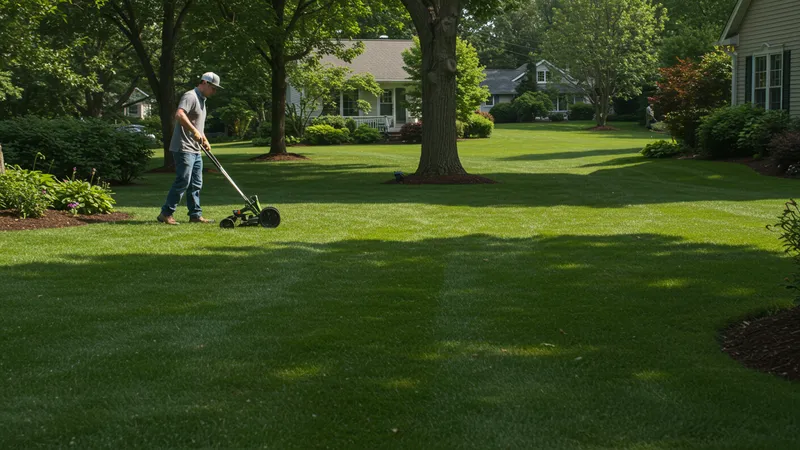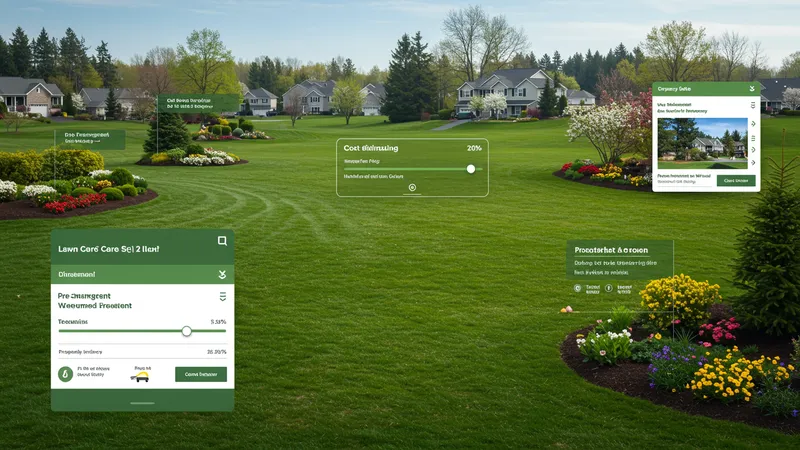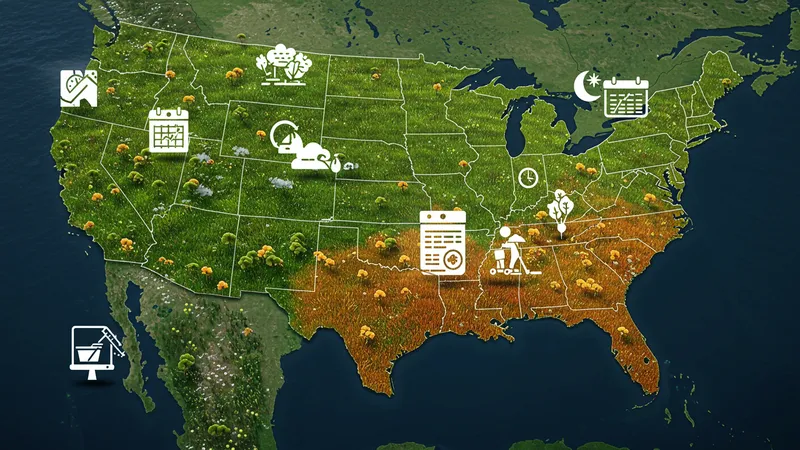

Lawn care maintenance plans are the core organizational strategies used by professional service providers to deliver scheduled, reliable mowing, trimming, fertilization, and yard care for residential and commercial properties. These plans break the complexity of lawn upkeep into structured packages, often with tiered services and transparent pricing, fitting distinct landscape needs throughout the year. Instead of offering random visits, top-tier lawn care companies in the United States use maintenance plans as contracts, ensuring consistent results, clearer client expectations, and predictable property care.
Under the hood, the design of these maintenance plans incorporates local climate, seasonal shifts, and the diverse needs of grass varieties across American regions. Plans might differ vastly in scope and price from region to region—what works in Florida won’t necessarily work in Minnesota, and the frequency of visits as well as included treatments are major differentiators. The fundamental goal: to simplify property owners’ decisions and provide reliable outcomes through structured, well-communicated scheduling and service bundling.

Maintenance plan structures from leading U.S. providers like TruGreen and Scotts generally include scheduled mowing, weed control, fertilization, and pest monitoring tailored to grass type and climate. Plan tiers often introduce upgrades—like aeration or overseeding—so customers can match services to property needs and budgets. These corporations invest heavily in national coverage, adjusting their schedules and application rates for zones ranging from humid Southeastern states to arid Western regions.
Pricing transparency is a major advantage of structured maintenance plans. Many providers publish base prices online, making it easier to compare. However, costs will shift with lawn size, local labor rates, and add-ons such as disease control or organic treatment upgrades. The monthly plan model also appeals to homeowners seeking predictable expenses.
Another crucial feature is the service calendar. Well-structured plans map out each visit in advance—letting customers anticipate when to expect technicians, when to move pets, or how to coordinate with irrigation schedules. Top companies leverage digital portals and automated reminders to reduce scheduling friction and improve satisfaction through seamless communication.
Professional maintenance plans elevate the reliability of results. Rather than relying on reactive scheduling or sporadic DIY care, plans ensure every treatment, mow, and application happens at scientifically ideal intervals—especially critical in climates with dramatic seasonal swings. This consistency drives healthier turf, fewer weed outbreaks, and more resilient properties year over year.
In short, the best lawn care companies in the United States structure maintenance plans around transparency, customization, and predictable scheduling. But what do these differences mean for homeowners, and how do the actual service features stack up between leading providers? The deeper details reveal even more valuable insights ahead…
The heart of every lawn care maintenance plan lies in its service breakdown. Top U.S. companies like TruGreen, Scotts, and Weed Man elaborate their packages into bundles that often go well beyond basic mowing. Typical service components include fertilization, weed control, aeration, overseeding, pest management, and seasonal cleanups. These bundled offerings reduce client confusion and allow for more precision when attending to unique lawn challenges—whether it's combating crabgrass in New Jersey or nurturing drought-resistant turf in Arizona.

A deeper dive shows that these plans typically structure fertilization visits to coincide with optimal seasonal growth cycles. For example, many Northern U.S. lawns receive their primary feedings in the spring and fall, while Southern lawns—especially those with warm-season grasses—often get adjusted scheduling across longer growing seasons. The customization of these plans reflects regional knowledge and research by major lawn care providers, underscoring the value of a well-structured contract over a one-size-fits-all solution.
Advanced service tiers offer targeted treatments, such as grub prevention, fungus treatments, and even soil amendments. These add-ons, commonly found in high-level plans, specifically address problems that can devastate lawn health if left unchecked. With Weed Man and TruGreen, such upgrades typically appear as line items, allowing for a-la-carte customization and transparent billing. Related digital tools from larger brands track service histories, giving customers a clear record and further accountability.
Communication is another notable service element. Most leading companies now provide clients with access to online dashboards, progress reports, and digital scheduling tools. This expanded digital interface allows users to track every planned visit, request changes, or escalate issues—all while maintaining a direct line to customer support professionals. This fusion of technology and horticultural expertise represents a shift in how home services are delivered across the U.S. landscape sector.
Pricing structures for American lawn care maintenance plans are shaped by factors such as property size, frequency of visits, chosen plan tier, and specific regional challenges. Base monthly prices typically start around $35 and can climb above $100 for large or premium properties. Providers like TruGreen and Scotts often offer digital tools to estimate costs ahead of time, incorporating square footage and service frequency to give customers clarity and prevent surprise charges.

Customization is one of the most valued aspects of modern maintenance plans. Unlike rigid one-price-fits-all models, leading firms empower consumers to select just the services their lawns truly need. This means property owners in the Midwest might choose pre-emergent weed treatments in spring, while those in the Pacific Northwest could opt for moss control and tailored fertilization. Making the plan flexible helps both the customer and the provider meet varying expectations and regional demands.
Discounts and loyalty incentives emerge in many U.S. plans as well. Long-term contracts, bundled services (like sprinklers or pest control), and advance prepayments might bring down costs by as much as 10–20%. Weed Man, for example, rewards contract renewals, while national chains develop loyalty programs to improve retention and long-term satisfaction. The flexibility to pause, upgrade, or downgrade plans enables households to find the right budget-service balance as circumstances evolve.
The use of online calculators and remote estimates streamlines the client experience. Many U.S. homeowners start with digital self-assessment tools offered by brands like Scotts to compare available tiers. Such platforms increase transparency and encourage customers to experiment with different combinations of cutting, fertilizing, and specialty treatments, resulting in a better outcome for the property as well as clearer communication on scope and investment.
Scheduling is not an afterthought in the world of structured maintenance plans. Lawn care companies in the United States meticulously plan service calendars to synchronize applications and mowing with peak lawn growth phases, regional climate patterns, and weather-driven adjustments. The major benefit of this approach is optimal results—rooted in scientific scheduling rather than a reactive call-in basis.

For instance, in warmer U.S. states like Texas or Florida, year-round growing conditions demand more frequent visits. In contrast, areas experiencing winter dormancy (such as the Midwest or Northeast) often condense most activity into late spring through early fall, with both the frequency and nature of treatments shifting accordingly. This regional calibration ensures that lawns aren't over- or under-serviced, a common risk for generic or DIY schedules.
Weather disruptions are an inevitable part of outdoor services, so structured plans often build in flexibility for rescheduling after storms or heatwaves. Top firms communicate planned changes proactively, using apps and email to keep customers up to date. Services like TruGreen’s mobile alerts help clients avoid unnecessary worry or confusion if unseasonable conditions delay a visit, establishing trust through transparency and responsiveness.
Seasonal transitions add another layer of complexity. Many structured plans automatically shift fertilization blends and mowing heights as the calendar turns, responding to signals such as soil temperature, day length, and rainfall. The adaptability of these schedules contributes significantly to sustained lawn health and minimizes customer intervention—demonstrating the value of a thoroughly engineered service plan over ad-hoc arrangements.
One of the primary advantages of enrolling in a professionally structured maintenance plan is the peace of mind it brings. With a predictable cadence of treatments and visits, homeowners in the United States can rely on their lawns receiving attention even during busy or travel-heavy months. The result is improved property value and consistently healthier turf with fewer patchy or weed-infested episodes compared to sporadic, reactive care.

The improved customer experience doesn’t end at the lawn’s edge. Leading providers are investing in technology to enhance every interaction, enabling appointment reminders, digital bill payment, and progress tracking portals. This visibility into service histories builds trust and fosters more proactive communication if concerns arise. National providers frequently cite customer retention rates above industry averages as a direct result of these customer-centric improvements.
Educational support is another significant benefit. Many structured plans include proactive advice or seasonal tips delivered by email or through an app, helping homeowners understand what’s happening on their property and why. Companies like Scotts have educational content built into their client platforms, empowering users to participate in the lawn’s success without extensive guesswork or research.
In the bigger picture, the combination of scheduled service, customized solutions, clear pricing, and digital communication positions structured maintenance plans as the future standard for effective, low-stress lawn management in the United States. As regional weather patterns evolve and local pest pressures shift, these adaptable and transparent plans are likely to remain the preferred choice for property owners seeking healthier, more resilient outdoor spaces.